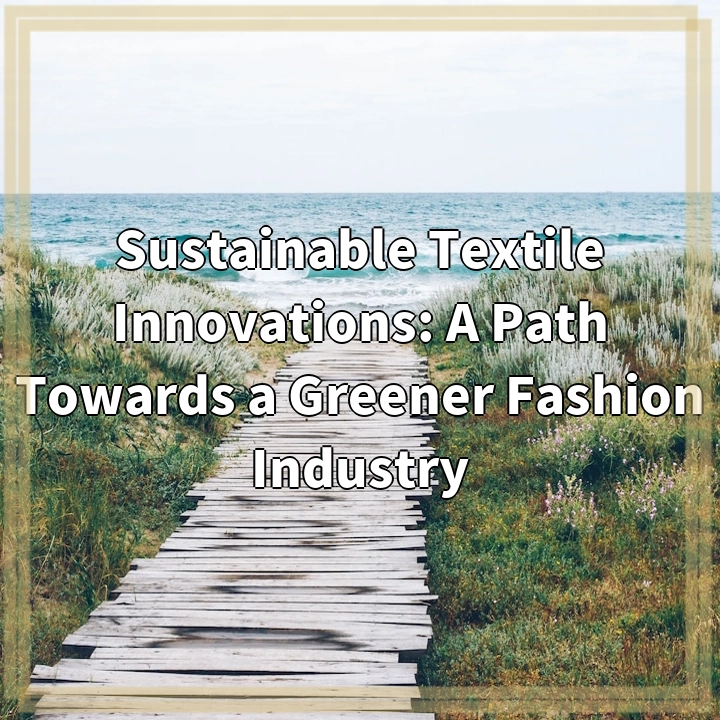
What is Sustainable Textile Innovations?
Sustainable textile innovations refer to the development and implementation of technologies, practices, and materials that aim to reduce the environmental impact of the fashion and textile industry. These innovations focus on minimizing resource consumption, reducing pollution, and promoting fair and ethical practices throughout the textile supply chain.
Real-World Problems Associated with Sustainable Textile Innovations
1. Resource Intensive Production
The fashion industry is known for its resource-intensive production processes, which involve immense amounts of water, energy, and chemicals. Traditional textile manufacturing methods contribute to water scarcity, carbon emissions, and pollution of ecosystems through toxic chemical discharge. Sustainable textile innovations aim to address these issues by creating alternatives to traditional practices.
2. Chemical Use
The widespread use of harmful chemicals in textile manufacturing poses significant risks to human health and the environment. The dyes, finishes, and other textile treatments often contain substances that are toxic, allergenic, or have adverse ecological effects. Sustainable textile innovations focus on developing non-toxic and eco-friendly alternatives to these chemicals, promoting safer and healthier industry practices.
3. Waste and Disposal
The fashion industry generates a staggering amount of textile waste, both in the production phase and through consumer disposal. Fast fashion culture exacerbates this problem, leading to clothes that are quickly discarded and end up in landfills or incinerators. Sustainable textile innovations seek to address this issue by promoting circularity, recycling, and upcycling practices. These innovations aim to create a closed-loop system, where materials are recovered, reused, and reintegrated into the supply chain.
4. Supply Chain Transparency
The fashion and textile supply chain is complex and often lacks transparency, making it difficult to trace the origin of materials, ensure fair labor practices, and monitor environmental impacts. Sustainable textile innovations incorporate technology solutions such as blockchain, which helps improve supply chain transparency and accountability. By establishing a clear chain of custody for materials and ensuring ethical production, these innovations work towards a greener and more socially responsible fashion industry.
5. Consumer Perception and Demand
One of the challenges in implementing sustainable textile innovations is the consumer perception and demand for fast and cheap fashion. Many consumers are unaware of the environmental and social costs associated with their clothing choices. Educating consumers about the benefits of sustainable textiles and creating a demand for eco-friendly fashion is essential to drive positive change. Sustainable textile innovations can help create attractive, affordable, and sustainable alternatives that capture the interest and support of consumers.

Solutions for a Greener Fashion Industry
1. Sustainable Production Practices
Implementing sustainable production practices, such as using renewable energy sources, minimizing water consumption, and reducing chemical use, can significantly reduce the environmental impact of textile manufacturing. Innovation in machinery, processes, and materials can help minimize resource consumption and pollution.
2. Development of Eco-Friendly Materials
Investing in the research and development of eco-friendly textiles, such as organic cotton, recycled polyester, and natural fibers, can provide sustainable alternatives to traditional materials. These materials are often produced with less environmental impact and adhere to ethical and fair trade practices.
3. Adoption of Circular Economy Principles
Transitioning to a circular economy model involves designing products for longevity, promoting repair and reuse, and implementing recycling and upcycling programs. Sustainable textile innovations can help create a closed-loop system where materials are continuously reused and recycled, reducing waste and minimizing the need for resource extraction.
4. Supply Chain Transparency and Ethical Practices
Improving supply chain transparency and ethical practices is essential in creating a greener fashion industry. Technologies like blockchain can ensure traceability and accountability throughout the supply chain, from raw material sourcing to the end product. Fair labor practices and adherence to environmental standards can also be promoted through certifications and responsible sourcing initiatives.
5. Consumer Education and Demand for Sustainable Fashion
Increasing consumer awareness about the environmental and social impacts of the fashion industry is crucial. Sustainable textile innovations can be combined with effective communication strategies to educate consumers about the benefits of sustainable textiles and encourage them to make conscious purchasing decisions. Creating demand for eco-friendly fashion can drive market transformation and support the growth of sustainable brands.















